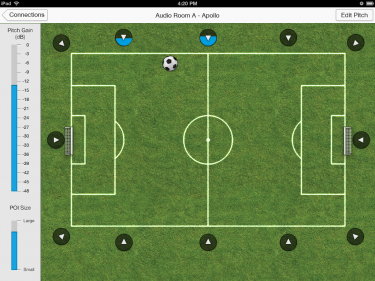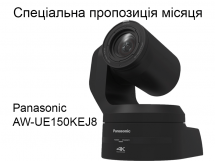| Українська | English | |||||||||||
|
|||||||||||
| News | About company | Service-centre | OB Van/SNG Rental | NextGen Energy Solutions | Contact us |
|
|
Engineering Service, Inc.
» News News At IBC2013 Calrec has launch its patented Soccer Sidekick iPad® app, an assistive mixing tool designed to simplify the job of tracking the on-field audio during a soccer game. It provides an alternative approach for highly experienced operators while allowing those with less experience to create a quality mix very simply.
One of the many tasks the audio operator must manage is the capture of all of the important on-pitch events while minimizing the amount of crowd and venue noise. The operator follows the action using a mentally challenging workflow that requires projecting a 2D location on the pitch onto the 1D row of faders on the desk, fading up only the most appropriate microphones for that moment in time. Soccer Sidekick provides a more intuitive and straightforward interface to assist the operator in this task. After defining the position and direction of the pitch microphones around an aerial image of a pitch on the display, the operator simply touches the corresponding area on the screen to indicate one or more locations of interest. The SoccerSidekick then calculates the optimal contribution from each microphone to best capture events at those locations and moves the appropriate faders on the desk. The operator can take over control of the faders manually at any time, maintaining complete control. « To the list of news |
|
|||||||||||||||||
 |
+38 (044) 593-18-20 +38 (073) 593-18-20 +38 (096) 532-96-82 +38 (095) 532-96-82 Service center Telegram @Engineer_Service |

|
|
|||||
 |
e-mail: engineer-service.tv 15 Vavylovykh str., Kiev, 04060, Ukraine Authorized service centre of Panasonic, Sony, JVC, Fujinon, Canon |
|||||||







